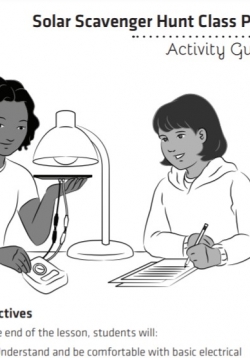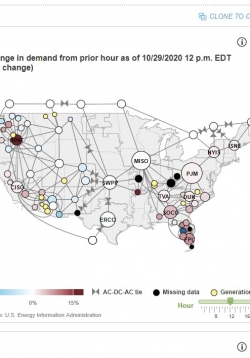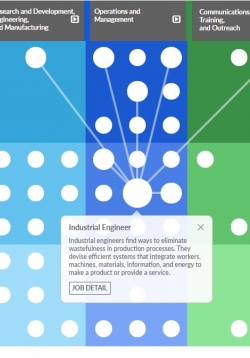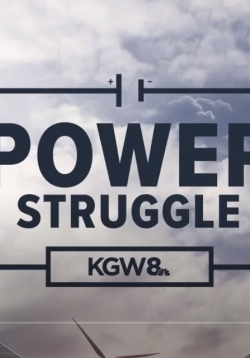
A series of 9 hands-on lessons (grades 2-12) that explore wind and solar energy, cirtcuity and electricity generation using a mixture of design and DIY tools. The includes materials lists and video support guides for implementing the curriculum.

A series of 9 hands-on lessons (grades 2-12) that explore wind and solar energy, cirtcuity and electricity generation using a mixture of design and DIY tools. The includes materials lists and video support guides for implementing the curriculum.

(In Beta) A great high-level data tool which provides maps and data on current and historical regional and national electricity usage and generation mix. Interactive with a variety of downloadable tables and charts that can be generated.

CREDC is a wealth of interactives and curricula for K-12 educators. There are six interactives for engaging in how to manage various sources of energy and their costs in relationship to energy usage, as well as curricula such as paper circuits, and resources and ideas for integrating coding, Minecraft, and other computer applications in energy and circuitry explanations.

A time-tested series of 19 lessons developed by KidWInd to explore Wind Energy, using KidWind or DIY wind turbines designed by students. Lessons span from basic concepts of wind energy all the way through sighting of windmills and impacts on people and wildlife.

A series of official career maps published by Department of Energy that highlight career tracks in a variety of clean energy fields across a range of expertise and educational levels. A great resource for thinking about career-connected learning, especially for HS and CTE educators. A separate career map highlights careers in hydrogen and fuel cells.
Throughout this creative, hands-on Unit, students are challenged to scale up every Disciplinary Core Idea and Science & Engineering Practice they’ve learned - from simple electricity generation, to building their own stereo speakers and DIY electric...

A series of over 150 digitial interacitves that allow students to explore a wide variety of science concepts, from simple energy transformations and motion, as well as beahvior of electricity in multiple contexts (static electricity, circuity, batteries, electromagnetism, fields, and more). Many include data collection and applied exploraion of science concepts in physics, chemistry, math, and more. Most are meant for secondary grades, but there are some good foundational energy interactives for upper elementary.

Interactive Map featuring sources of energy and consumption. Great tool for engaging students in understanding where their energy comes from locally and from what sources.

Great synopsis of historical and future problems with energy supply and management in the Pacific Northwest. Strong utility policy focus, with good info in the context of Integrated Resource Plans and Renewable Portfolio Standards.
Students will combine research, direct observations, and hands-on investigation to lead them into an engineering design project involving the construction of a solar updraft tower. During this process, students will make references to specific phenomena...
Bonneville Environmental Foundation
1500 SW 1st Avenue, Suite 710
Portland OR 97201
phone: 503-248-1905